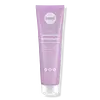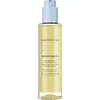What's inside
What's inside
 Key Ingredients
Key Ingredients

 Benefits
Benefits

 Concerns
Concerns

 Ingredients Side-by-side
Ingredients Side-by-side

Isopropyl Myristate
EmollientCaprylic/Capric Triglyceride
MaskingCetearyl Alcohol
EmollientPEG-20 Glyceryl Triisostearate
EmollientCopernicia Cerifera Wax
PEG-6 Caprylic/Capric Glycerides
EmulsifyingCandelilla Cera
EmollientGlyceryl Stearate Se
EmulsifyingCannabis Sativa Seed Oil
EmollientCitrullus Lanatus Seed Oil
EmollientSilica
AbrasiveTribehenin
EmollientJojoba Esters
EmollientHelianthus Annuus Seed Wax
Skin ConditioningPhenoxyethanol
PreservativeBisabolol
MaskingPanthenyl Ethyl Ether
Tocopheryl Acetate
AntioxidantAcacia Decurrens Flower Extract
MaskingPolyglycerin-3
HumectantLecithin
EmollientAscorbyl Palmitate
AntioxidantTocopherol
AntioxidantHelianthus Annuus Seed Oil
EmollientIsopropyl Myristate, Caprylic/Capric Triglyceride, Cetearyl Alcohol, PEG-20 Glyceryl Triisostearate, Copernicia Cerifera Wax, PEG-6 Caprylic/Capric Glycerides, Candelilla Cera, Glyceryl Stearate Se, Cannabis Sativa Seed Oil, Citrullus Lanatus Seed Oil, Silica, Tribehenin, Jojoba Esters, Helianthus Annuus Seed Wax, Phenoxyethanol, Bisabolol, Panthenyl Ethyl Ether, Tocopheryl Acetate, Acacia Decurrens Flower Extract, Polyglycerin-3, Lecithin, Ascorbyl Palmitate, Tocopherol, Helianthus Annuus Seed Oil
Carthamus Tinctorius Seed Oil
MaskingC9-12 Alkane
SolventPentaerythrityl Tetraethylhexanoate
EmollientSorbeth-30 Tetraisostearate
EmulsifyingHydrogenated Polydecene
EmollientSqualane
EmollientCoco-Caprylate/Caprate
EmollientWater
Skin ConditioningTocopherol
AntioxidantBorago Officinalis Seed Oil
EmollientCucumis Sativus Seed Oil
EmollientHelianthus Annuus Seed Oil
EmollientSimmondsia Chinensis Seed Oil
EmollientPunica Granatum Flower Extract
Skin ConditioningSea Salt
AbrasiveParfum
MaskingLinalool
PerfumingLimonene
PerfumingPhenoxyethanol
PreservativeCarthamus Tinctorius Seed Oil, C9-12 Alkane, Pentaerythrityl Tetraethylhexanoate, Sorbeth-30 Tetraisostearate, Hydrogenated Polydecene, Squalane, Coco-Caprylate/Caprate, Water, Tocopherol, Borago Officinalis Seed Oil, Cucumis Sativus Seed Oil, Helianthus Annuus Seed Oil, Simmondsia Chinensis Seed Oil, Punica Granatum Flower Extract, Sea Salt, Parfum, Linalool, Limonene, Phenoxyethanol
Ingredients Explained
These ingredients are found in both products.
Ingredients higher up in an ingredient list are typically present in a larger amount.
Helianthus Annuus Seed Oil is the oil derived from the seeds of a Sunflower. Sunflower seed oil is non-fragrant. It is an emollient, meaning it helps to soften the skin.
Sunflower seed oil contains many fatty acids. The fatty acids found in sunflower seeds include (from highest amount to least): linoleic acid, myristic acid, palmitic acid, stearic acid, arachidic acid, oleic acid, and linolenic acid.
These fatty acids help the skin create ceramides. Ceramides play a role in repairing the skin barrier.
Helianthus Annuus Seed Oil helps moisturize the skin. This in turn helps the skin look more rejuvenated and smoother.
Sunflowers are rich in vitamin E.
Historians believe Indigenous cultures of North America domesticated sunflowers before corn. Thus they relied on sunflower oil for a variety of uses. One such use is moisturizing skin and hair.
Sunflower seed oil may not be fungal acne safe. We recommend speaking with a professional if you have any concerns.
Learn more about Helianthus Annuus Seed OilPhenoxyethanol is a preservative that has germicide, antimicrobial, and aromatic properties. Studies show that phenoxyethanol can prevent microbial growth. By itself, it has a scent that is similar to that of a rose.
It's often used in formulations along with Caprylyl Glycol to preserve the shelf life of products.
Tocopherol (also known as Vitamin E) is a common antioxidant used to help protect the skin from free-radicals and strengthen the skin barrier. It's also fat soluble - this means our skin is great at absorbing it.
Vitamin E also helps keep your natural skin lipids healthy. Your lipid skin barrier naturally consists of lipids, ceramides, and fatty acids. Vitamin E offers extra protection for your skin’s lipid barrier, keeping your skin healthy and nourished.
Another benefit is a bit of UV protection. Vitamin E helps reduce the damage caused by UVB rays. (It should not replace your sunscreen). Combining it with Vitamin C can decrease sunburned cells and hyperpigmentation after UV exposure.
You might have noticed Vitamin E + C often paired together. This is because it is great at stabilizing Vitamin C. Using the two together helps increase the effectiveness of both ingredients.
There are often claims that Vitamin E can reduce/prevent scarring, but these claims haven't been confirmed by scientific research.
Learn more about Tocopherol